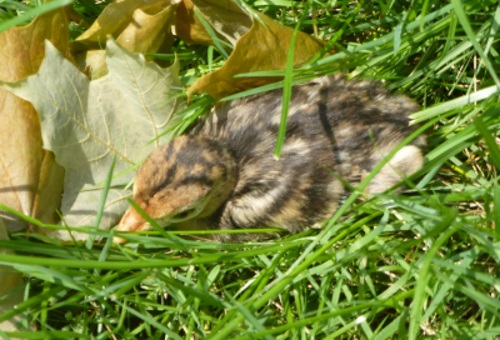Press Releases

05/31/2017
Annual Wild Turkey Brood Survey Participate in a Citizen Science Project for CT DEEP
Connecticut’s Department of Energy and Environmental Protection (DEEP) urges residents to keep a tally of all sightings of hen turkeys and poults (young-of-the-year) from June 1 through August 31 as part of the Wildlife Division’s Annual Wild Turkey Brood Survey. Results from this survey allow DEEP biologists to accurately determine turkey productivity and reproductive success by estimating the average number of turkey poults per hen statewide, assessing annual fluctuations in the turkey population, gauging reproductive success each year, and evaluating recruitment of new birds into the fall population.
Connecticut’s wild turkey population has been relatively stable in the past several years - estimated population at 35,000 birds - at a lower level than the peak population that occurred in the mid-2000s. Despite some declines, the state’s population remains healthy and productive.
Hens are distinguished from toms by size, plumage, and head characteristics. Hens typically are smaller than toms (weighing in at about 8 to 10 pounds; whereas toms will exceed 15 pounds). Hens have feathering to the top of their head that generally is blue/gray in color, while toms have larger heads with prominent red, white, and blue coloration. A hen’s feathers appear light brown in color in contrast to the tom’s black and iridescent feathering.
To participate, volunteers should use a Wild Turkey Observation Form provided on the Wildlife Division’s website to record all of the hens and poults observed during normal travel. Each observation is categorized by the total number of hens observed, total poults, and a total number of hens with poults. Observations of male (tom) turkeys are not requested for this survey. Each participant is asked to submit a tally of results to the Wildlife Division shortly after the end of the survey period (June 1-August 31). The Wild Turkey Observation Form (PDF) can be downloaded from www.ct.gov/deep/WildlifeCitizenScience; instructions are on the data sheet. Any questions should be directed to Wild Turkey Program Biologist, Michael Gregonis at Michael.gregonis@ct.gov.
“This is an excellent way to partner with the Wildlife Division to help better monitor the state's wild turkey population,” said Michael Gregonis, Turkey Program Biologist for the DEEP Wildlife Division. “Citizen involvement in this survey is a cost-effective means of gathering useful data. Participants should look carefully when counting turkey broods as the tiny camouflaged poults may be difficult to spot in grasses and leaves.”
Data obtained during the 2016 brood survey indicate wild turkeys had fair productivity in Connecticut; survey results came to 2.8 poults per adult for all hens observed and 4.0 poults per adult for hens observed with at least one poult. Turkey nesting success can vary annually in response to weather conditions, predator populations, and habitat characteristics.
For more information on turkeys view this fact sheet.

Photo Credit - George Zeller
The DEEP Wildlife Division is asking residents to keep a tally of all sightings of hen turkeys and poults (young-of-the-year) from June 1 through August 31 as part of the Wildlife Division’s Annual Wild Turkey Brood Survey. Final results are then submitted to the Division to help with monitoring Connecticut’s wild turkey population.
- Twitter: @CTDEEPNews
- Facebook: DEEP on Facebook

